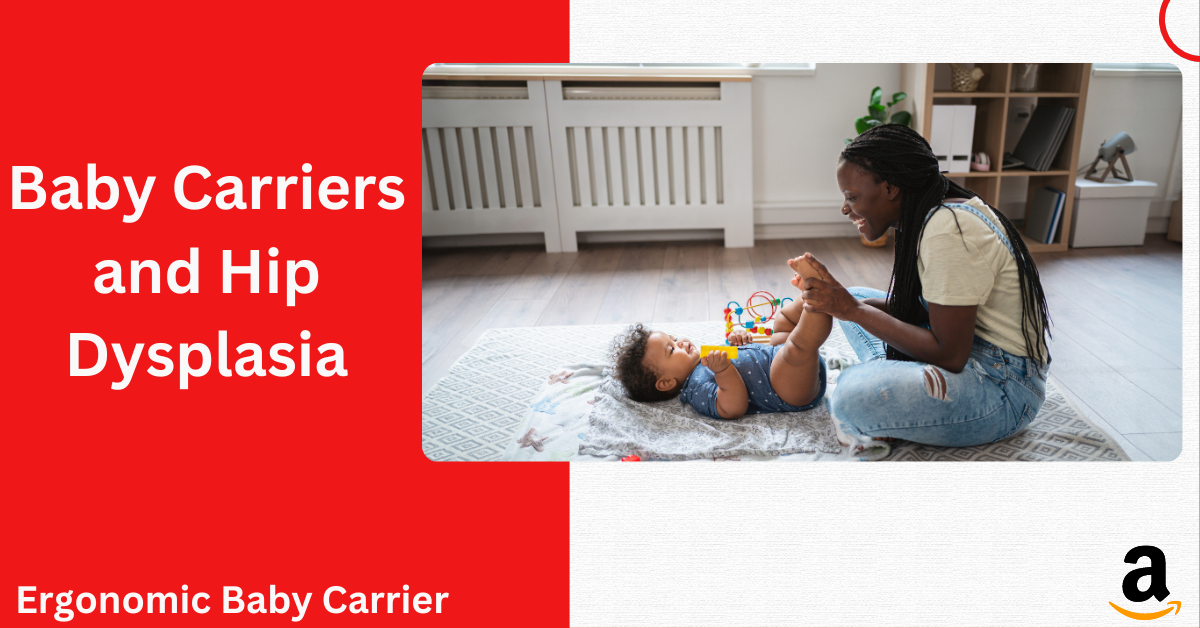Mumgaroo Baby Carrier Newborn to Toddler, Toddler Carrier with Hood All Seasons & All Position Baby Hip Carrier, Hip Carrier for Baby (Grey Upgrade)
$44.99 (as of April 22, 2024 21:54 GMT +00:00 - More infoProduct prices and availability are accurate as of the date/time indicated and are subject to change. Any price and availability information displayed on [relevant Amazon Site(s), as applicable] at the time of purchase will apply to the purchase of this product.)In recent years, the use of baby carriers has become increasingly popular among parents as a convenient way to keep their infants close while going about daily activities. However, there has been growing concern about the potential link between baby carriers and hip dysplasia, a developmental condition affecting the hip joints. In this article, we will delve into the relationship between baby carriers and hip dysplasia, examining the benefits, risks, and precautions that parents should consider when using these carriers.
Introduction
As parents, we are always seeking ways to provide comfort and security for our little ones. Baby carriers have gained popularity for their ability to meet these needs, allowing parents to keep their infants close while multitasking. However, the concern of hip dysplasia associated with baby carrier usage has raised important questions that deserve our attention.
Understanding Hip Dysplasia
Hip dysplasia is a condition where the hip joint doesn’t develop properly, leading to instability and potential long-term issues. The hip joint consists of a ball-and-socket structure, and if the ball doesn’t fit snugly into the socket, the joint can become dislocated or prone to damage.
Baby Carriers: Types and Usage
There are various types of baby carriers available, including wraps, slings, soft-structured carriers, and more. These carriers allow parents to hold their babies close, providing comfort and bonding opportunities. However, the concern arises when improper positioning in these carriers potentially contributes to hip dysplasia.
The Concerns Surrounding Hip Dysplasia
Experts express concerns that incorrect positioning of a baby’s hips in certain carriers can lead to hip dysplasia. In particular, carriers that force the legs into a straight-down position can put excessive stress on the underdeveloped hip joint, potentially exacerbating the condition.
Research and Expert Opinions
Research on the link between baby carriers and hip dysplasia is ongoing. While some studies suggest a potential association, others emphasize that proper usage of carriers, along with considering the baby’s hip development stage, can mitigate risks. Consulting with medical professionals and adhering to guidelines is crucial.
Guidelines for Safe Baby Carrier Usage
To promote healthy hip development, follow these guidelines:
- Choose carriers that allow the baby’s hips to spread naturally (M-shaped position).
- Ensure the carrier supports the thighs, not just the crotch.
- Position the baby’s knees at or slightly above hip level.
- Maintain an upright position for the baby’s spine.
Maintaining Healthy Hip Development
While baby carriers can offer convenience, it’s essential to balance their use with other forms of holding and tummy time. Regularly allowing the baby’s hips to move freely can contribute to their overall hip development.
Alternatives to Traditional Baby Carriers
If concerns about hip dysplasia are prominent, alternatives like using strollers, bouncers, or simply holding the baby in your arms can provide relief. However, these options might not offer the same level of hands-free convenience.
Benefits of Babywearing
Despite the concerns, babywearing offers numerous benefits, including bonding, convenience, and promoting a caregiver’s responsiveness to the baby’s needs. Choosing the right carrier and using it correctly are key to reaping these benefits safely.
Tips for Choosing the Right Baby Carrier
When selecting a baby carrier, keep these factors in mind:
- Carrier design and structure
- Baby’s age and developmental stage
- Ease of use and adjustability
- Support for the baby’s neck and spine
Best Practices for Hip-Healthy Babywearing
Follow these practices to ensure hip-healthy babywearing:
- Read and follow the manufacturer’s instructions.
- Spread the baby’s weight evenly across your body.
- Regularly monitor the baby’s comfort and breathing.
Addressing Common Myths
Myth: Baby carriers always cause hip dysplasia. Reality: Proper usage and carrier selection play a significant role in preventing hip dysplasia.
Myth: Baby carriers are dangerous for babies’ hips. Reality: With proper positioning and adherence to guidelines, baby carriers can be used safely.
Conclusion
The link between baby carriers and hip dysplasia is a topic of concern for many parents. While there are potential risks associated with improper usage, informed decisions, and adherence to guidelines can make babywearing a safe and enjoyable experience. Prioritizing the baby’s hip development while reaping the benefits of bonding and convenience is the key to finding a healthy balance.
FAQs
Can baby carriers really cause hip dysplasia?
While there’s an ongoing debate, improper usage of certain baby carriers may potentially contribute to hip dysplasia. Following guidelines is essential.
How can I ensure my baby’s hips are developing properly?
Consult your pediatrician, choose hip-friendly carriers, and provide regular opportunities for hip movement.
Are there specific baby carrier brands that are recommended?
Some brands prioritize hip-friendly designs, but research and guidelines matter more than specific brands.












